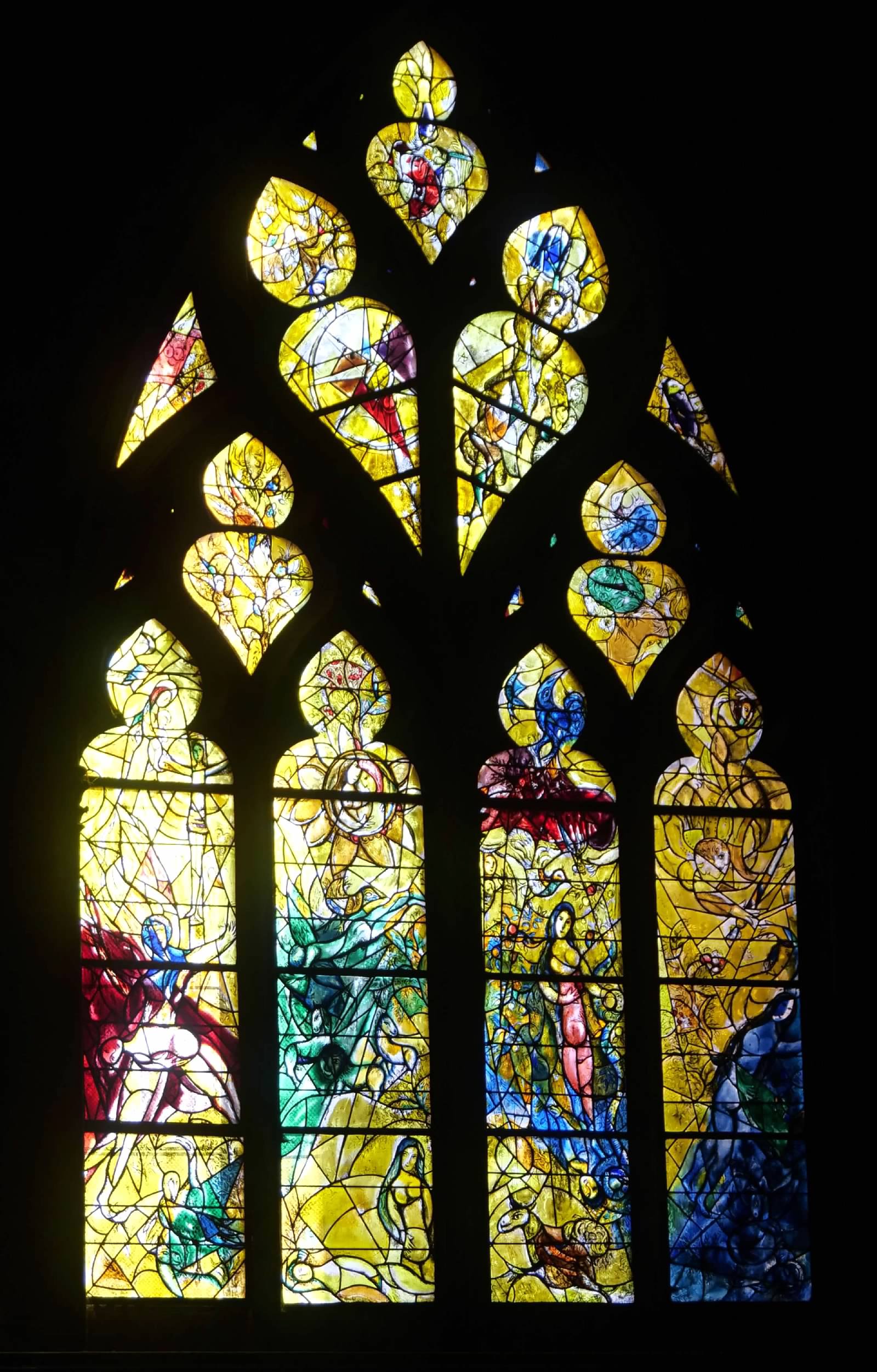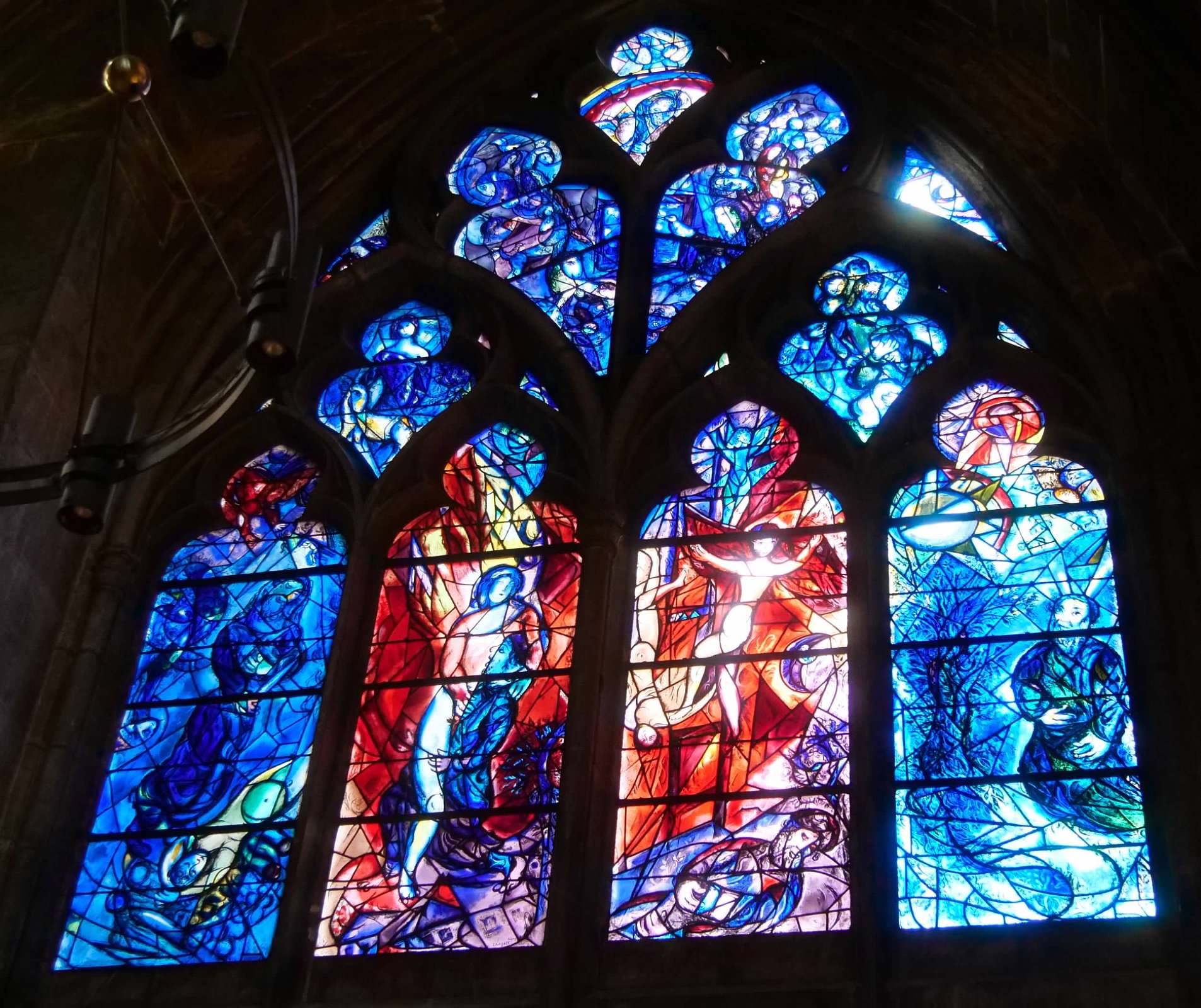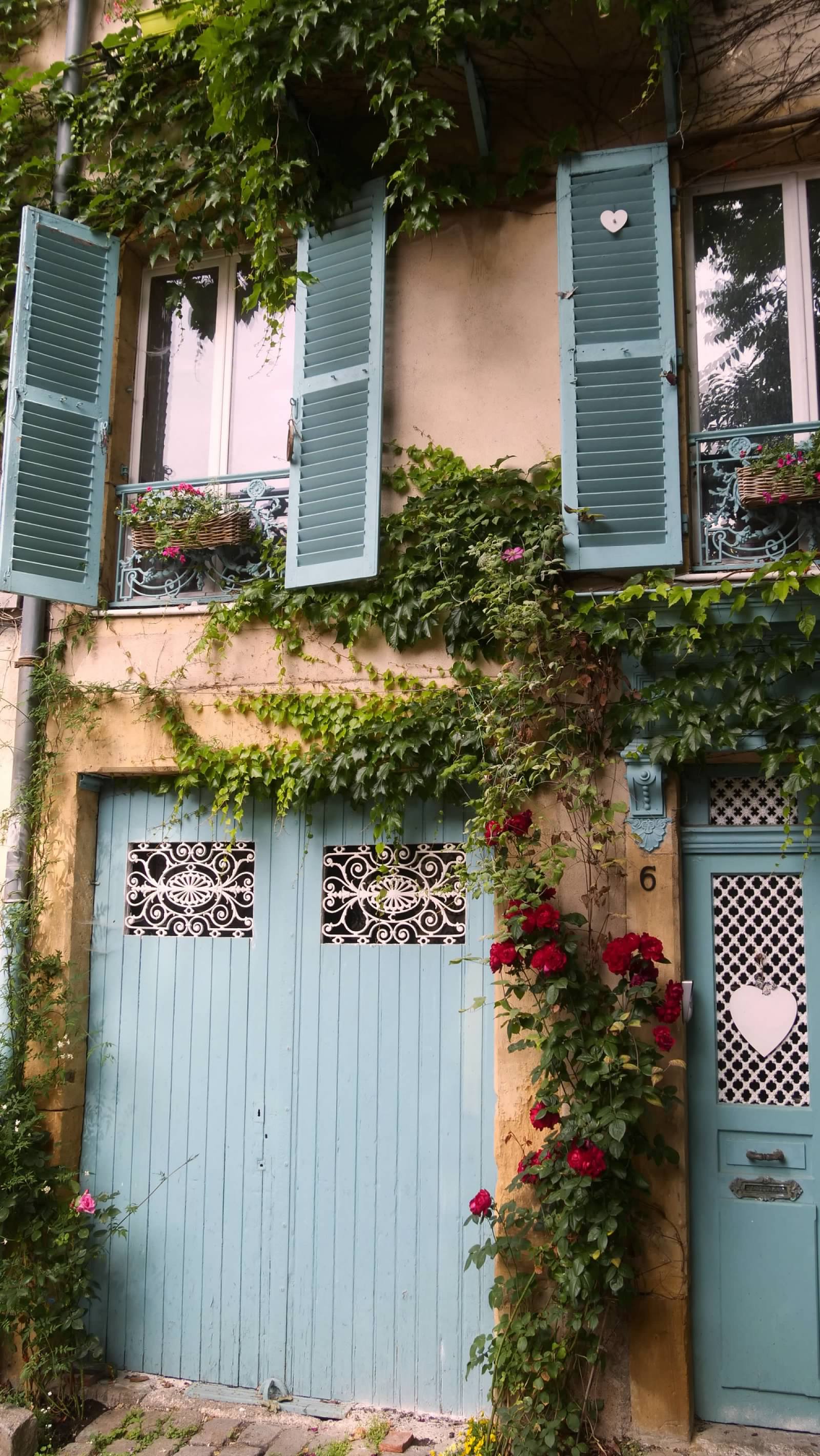We left Nancy on a early morning train to Metz, which was a short thirty minute train ride away. In hindsight, perhaps I should have considered staying in Metz an extra night and just doing Nancy as a day trip, taking the train down and back the same day. Either way, we arrived in Metz by mid-morning, dropped our luggage at our hotel, and journey out to begin seeing the city.  We took a long, peaceful walk through the parks along the Moselle River, enjoying the scenery. We then ventured further into the city, walking past the Cathedral to the Musée de La Cour d'Or de Metz. This museum details the long history of Metz, from its Roman roots through the middle ages. The museum is built on top of the site of an ancient Roman bath, and ruins of that bath have been excavated and are visible in the museum basement. There are some significant Roman mosaics on display, as well as a collection of medieval painted wooden ceilings (one of the largest collections in the world, apparently). There was even a gallery detailing the Jewish history in Metz. The museum was so extensive that we spent most of the rest of the day there, learning about Metz and its history and art. We finished the day with a visit to the Cathedral, which was constructed beginning in the 13th century. And while the gothic structure itself is impressive and beautiful, the Cathedral also has a collection of stained glass windows by Marc Chagall that were worth the visit by themselves.
We took a long, peaceful walk through the parks along the Moselle River, enjoying the scenery. We then ventured further into the city, walking past the Cathedral to the Musée de La Cour d'Or de Metz. This museum details the long history of Metz, from its Roman roots through the middle ages. The museum is built on top of the site of an ancient Roman bath, and ruins of that bath have been excavated and are visible in the museum basement. There are some significant Roman mosaics on display, as well as a collection of medieval painted wooden ceilings (one of the largest collections in the world, apparently). There was even a gallery detailing the Jewish history in Metz. The museum was so extensive that we spent most of the rest of the day there, learning about Metz and its history and art. We finished the day with a visit to the Cathedral, which was constructed beginning in the 13th century. And while the gothic structure itself is impressive and beautiful, the Cathedral also has a collection of stained glass windows by Marc Chagall that were worth the visit by themselves.


The next morning, we started the day by doing a self-guided tour of the medieval fortifications of Metz. It was interesting to learn that the various trade guilds were each responsible for maintaining certain portions of the defenses, and were expected to man their sections to defend the city.
It was interesting to learn that the various trade guilds were each responsible for maintaining certain portions of the defenses, and were expected to man their sections to defend the city. The legacy of these responsibilities lingers on in the names of the various towers along the walls, which are named for the guilds responsible for them. From there, our walk took us across the Moselle river, where we visited the Temple Neuf, a protestant church on the banks of the river and the Tower of the Garrison Church, the spire of a protestant church built after the city was annexed by the Prussian Empire after the Franco-Prussian war in the 19th century. The church itself was abandoned after the city returned to France after WWI and was destroyed by allied bombs during WWII.
The legacy of these responsibilities lingers on in the names of the various towers along the walls, which are named for the guilds responsible for them. From there, our walk took us across the Moselle river, where we visited the Temple Neuf, a protestant church on the banks of the river and the Tower of the Garrison Church, the spire of a protestant church built after the city was annexed by the Prussian Empire after the Franco-Prussian war in the 19th century. The church itself was abandoned after the city returned to France after WWI and was destroyed by allied bombs during WWII.
In the afternoon, we visited a number of other churches around the city, including the beautiful Église Notre-Dame-de-L'Assomption, and did another sefl-guided walking tour that highlighted many of the public sculptures on display around the city, including an impressive statue of the Marquis de Lafayette, who reportedly made the decision to travel across the Atlantic to join the American Revolution here in Metz.
and did another sefl-guided walking tour that highlighted many of the public sculptures on display around the city, including an impressive statue of the Marquis de Lafayette, who reportedly made the decision to travel across the Atlantic to join the American Revolution here in Metz.
The next morning, we started the day by doing a self-guided tour of the medieval fortifications of Metz.
In the afternoon, we visited a number of other churches around the city, including the beautiful Église Notre-Dame-de-L'Assomption,